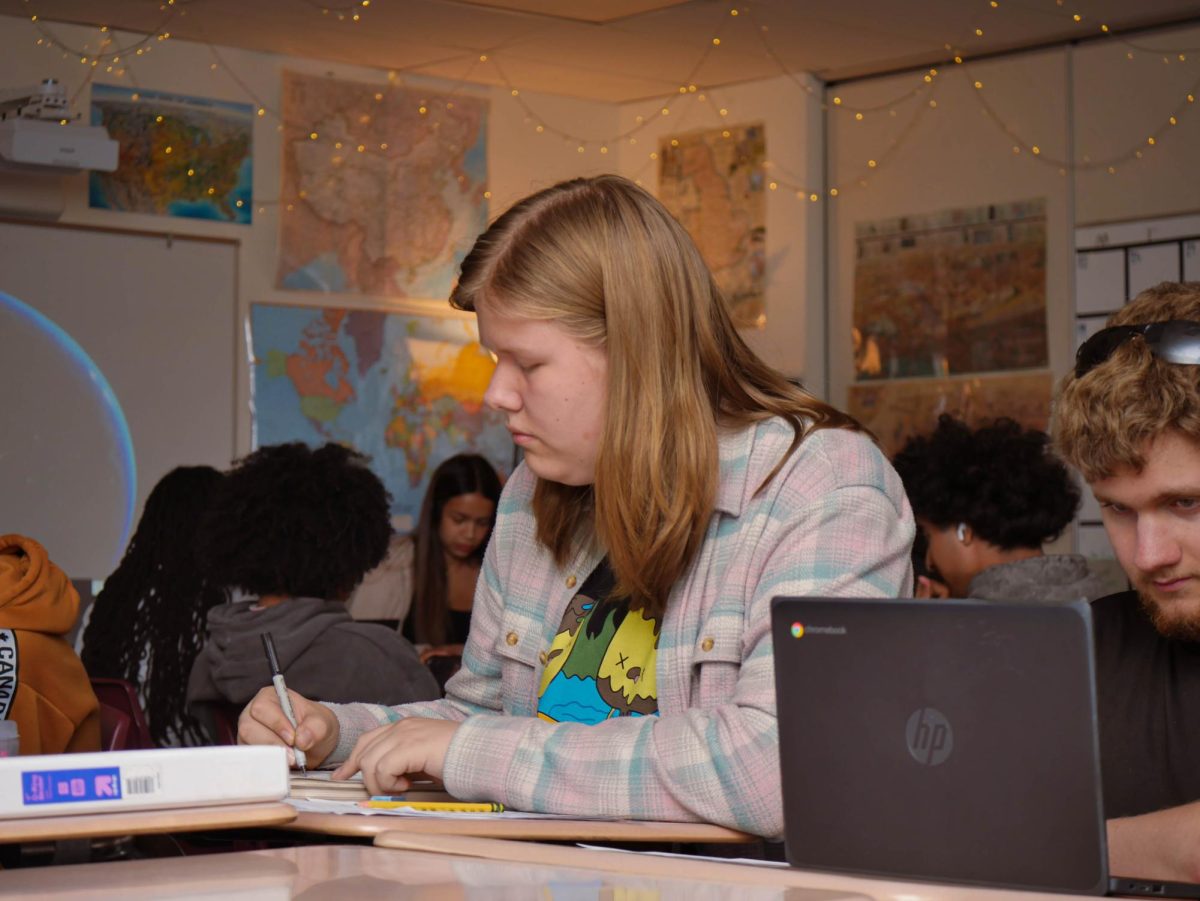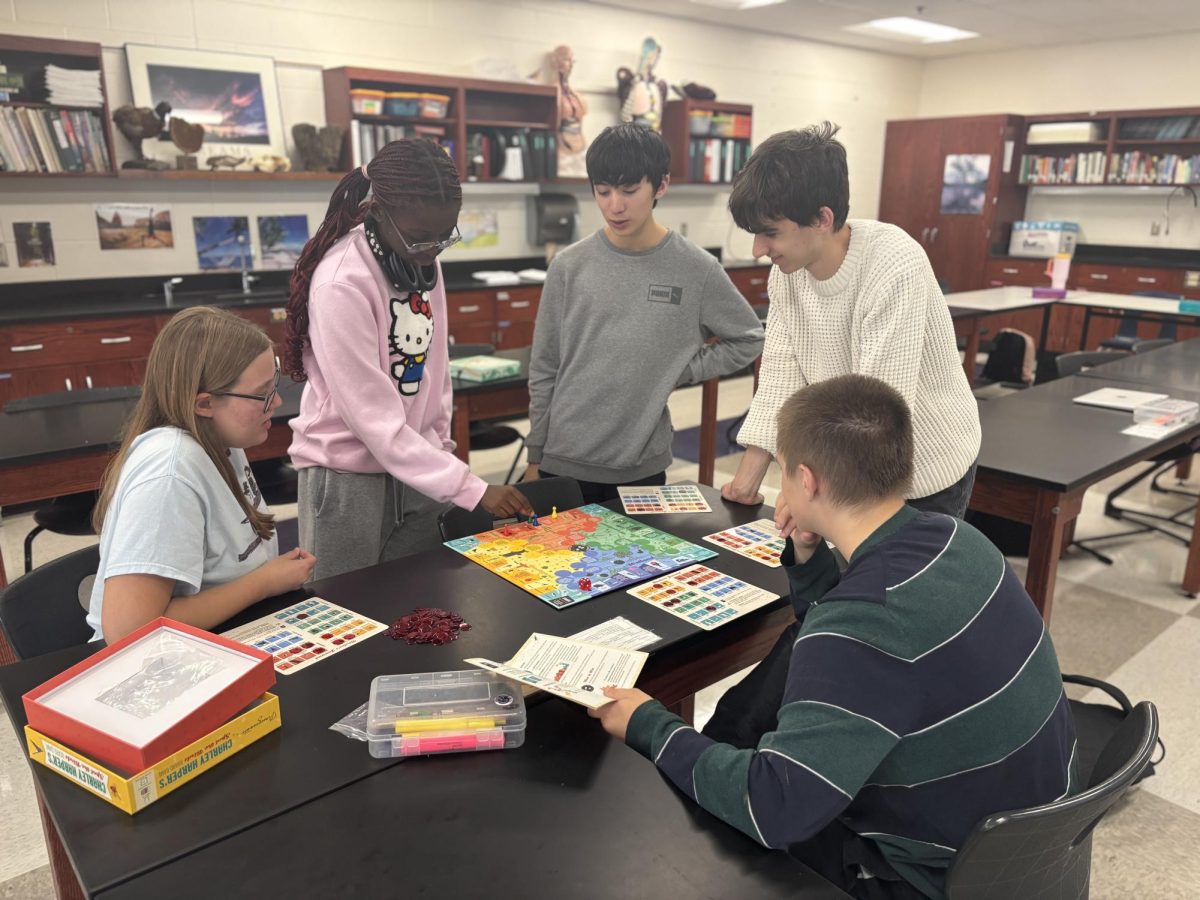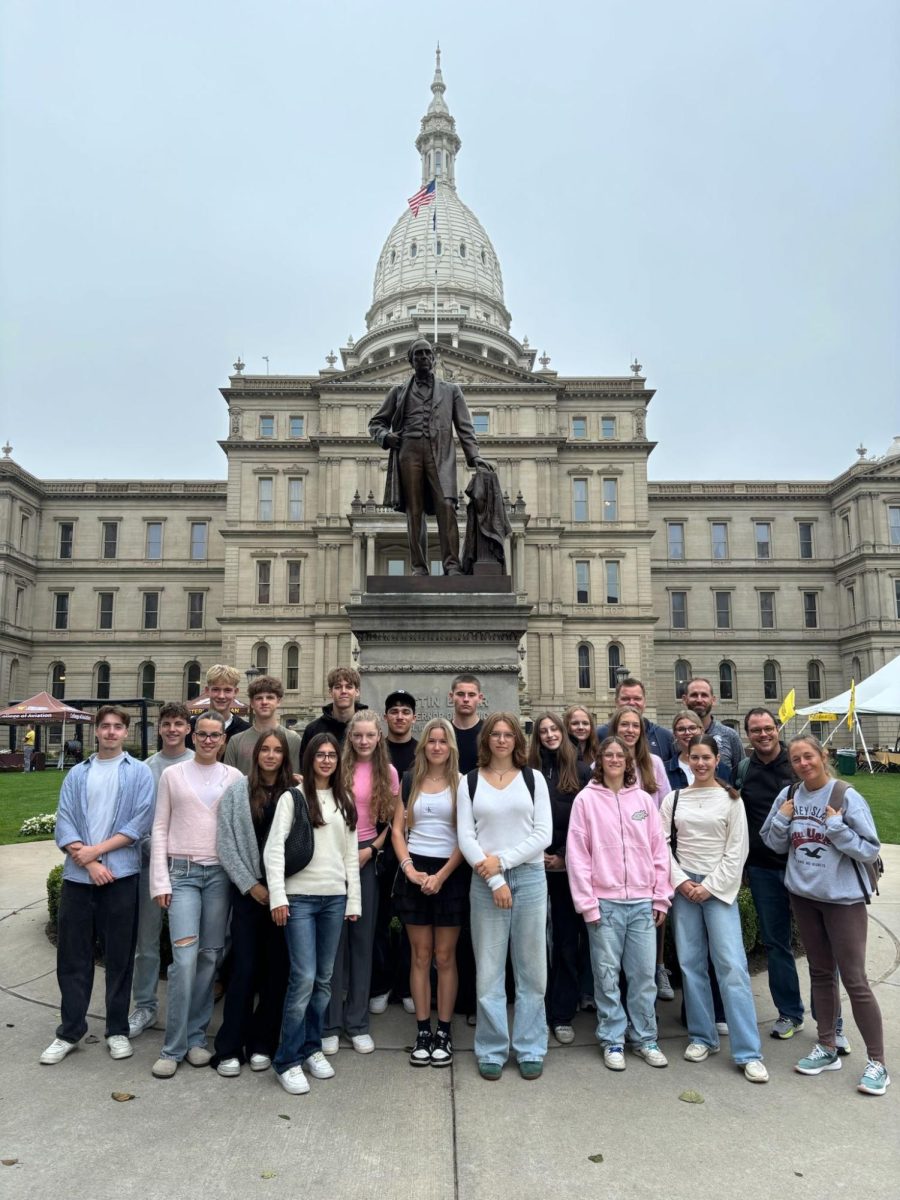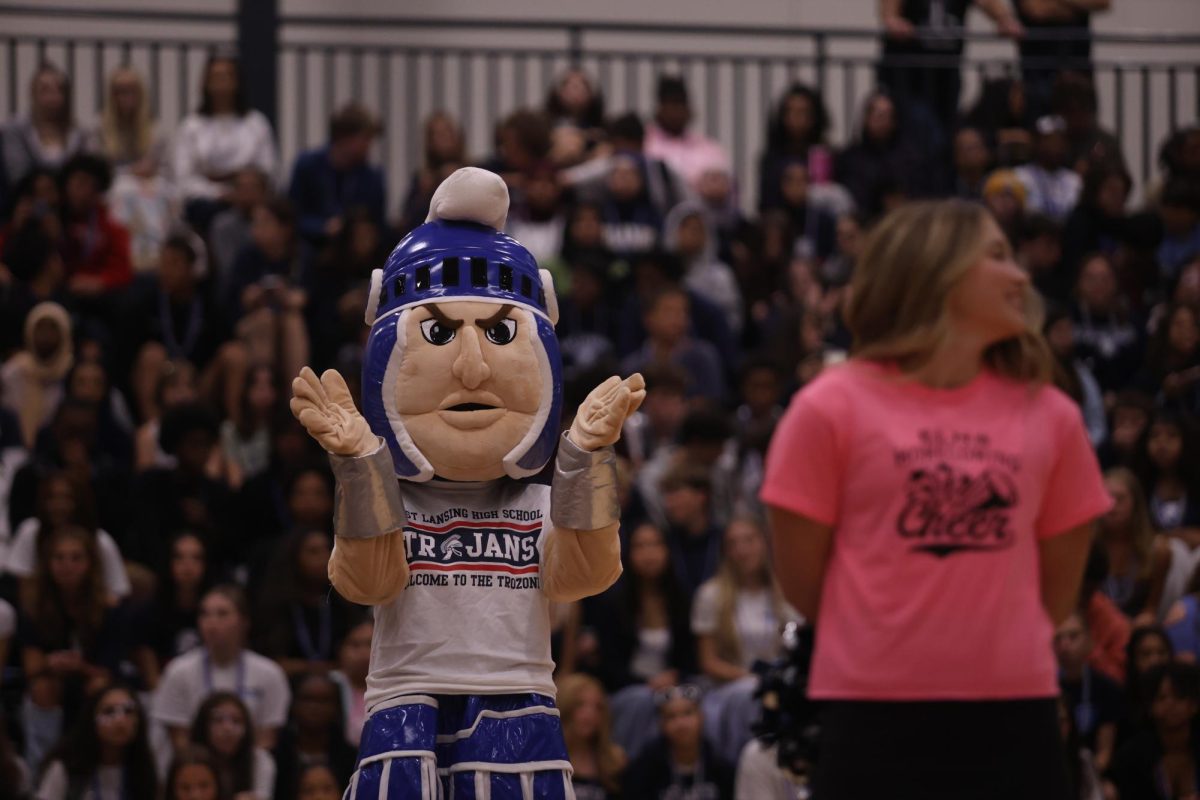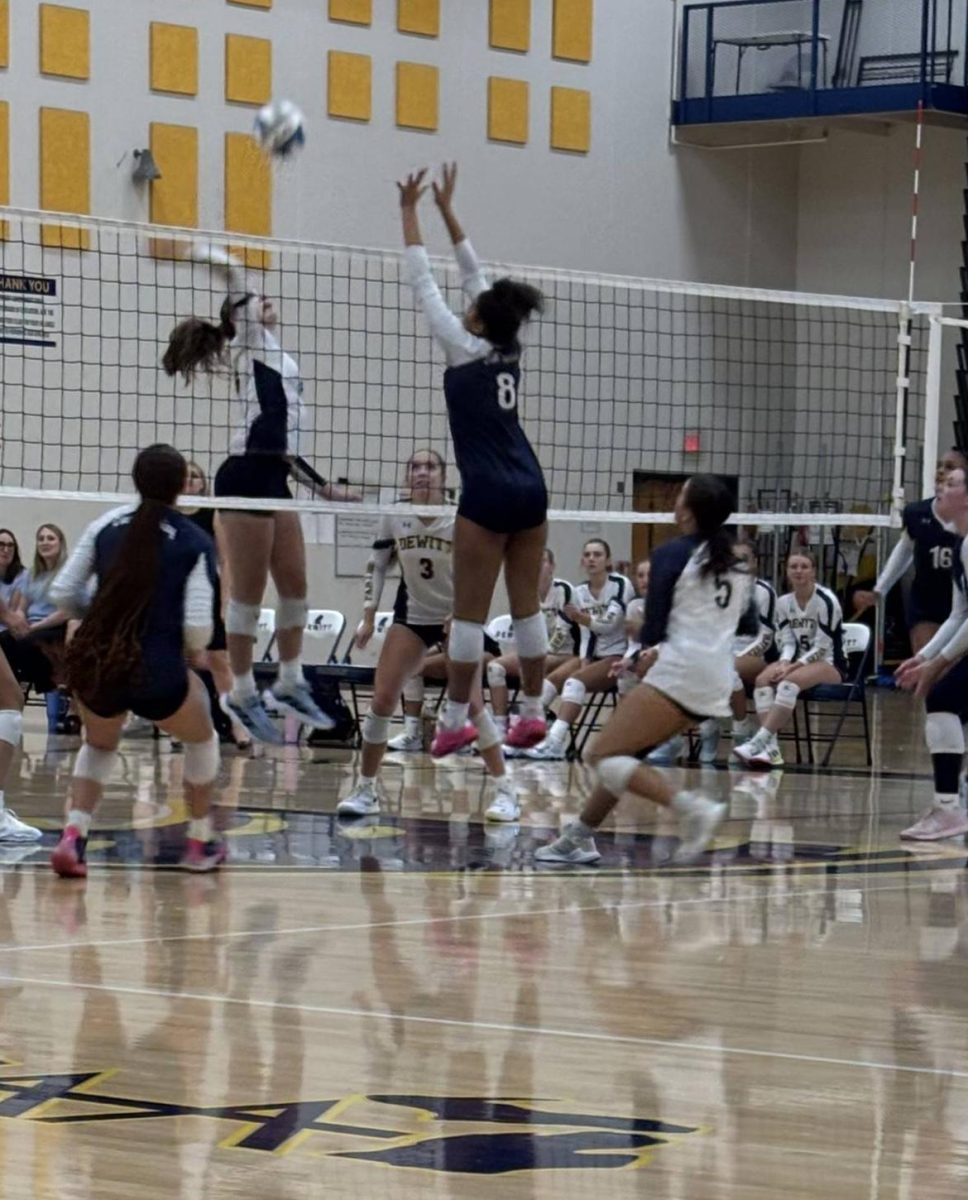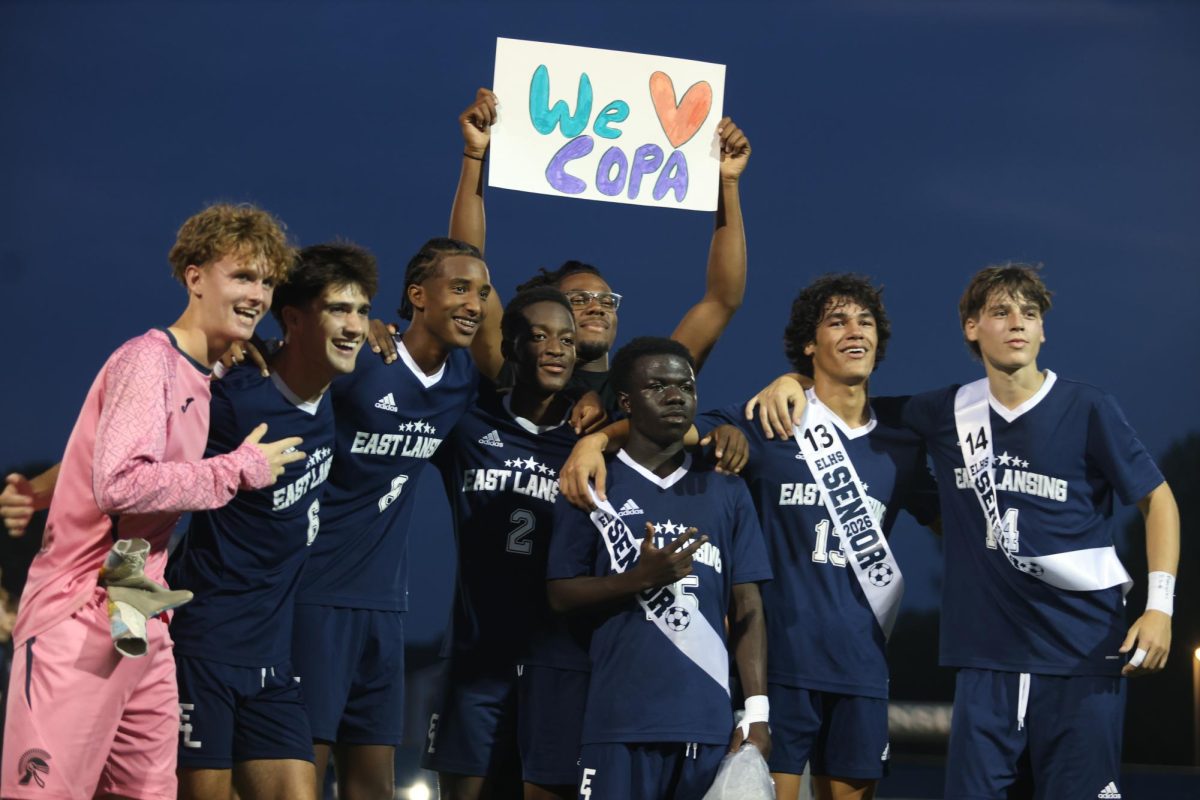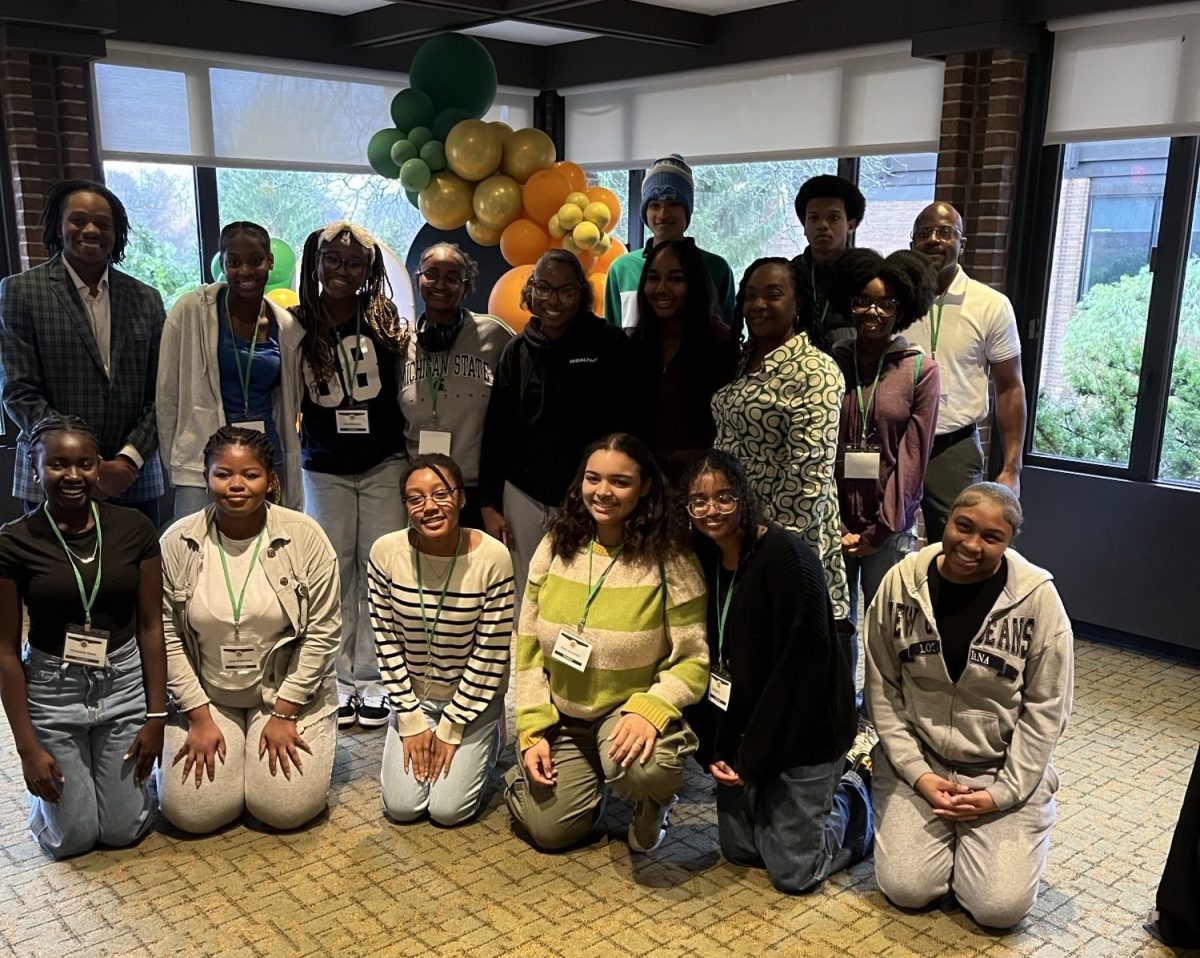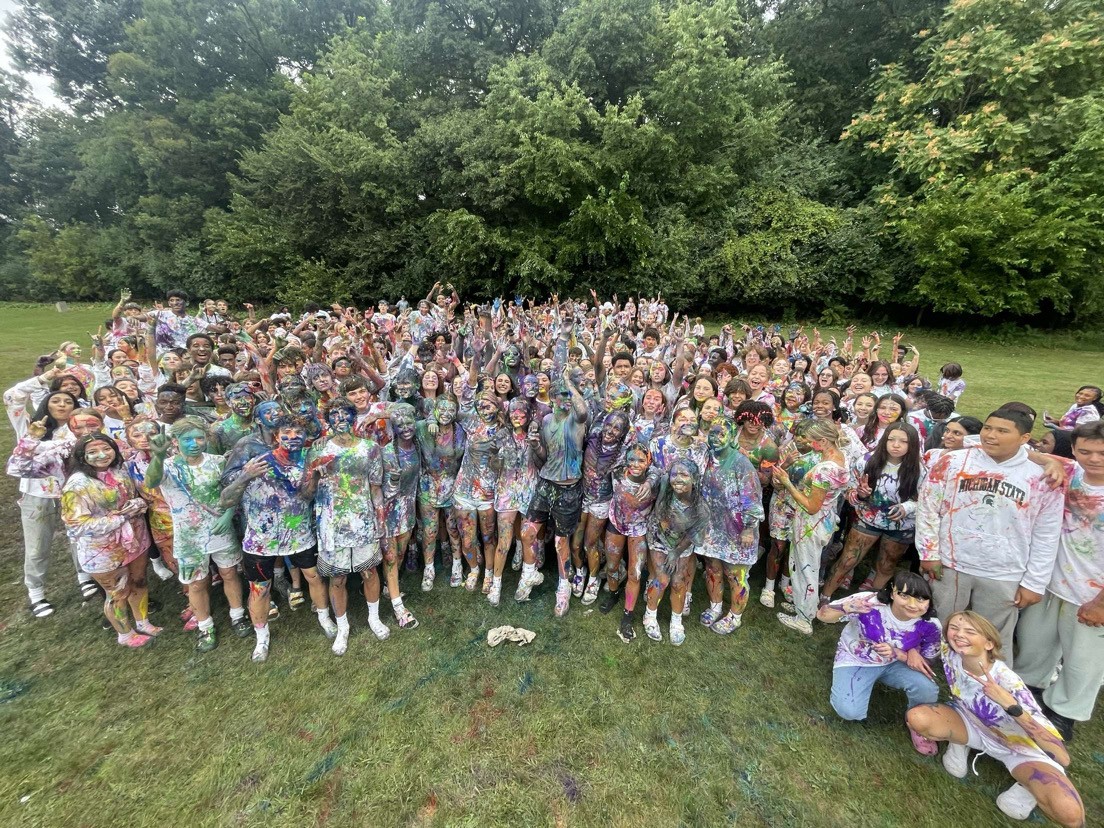Indigenous Peoples’ Day is celebrated across the country to honor Native history and culture. For the students and staff of ELHS, the day has varying meanings depending on personal experience and perspective.
For some students, like Emmett Singel-Fletcher (11), the day is a chance to celebrate personal and cultural identity as well as connect with his community.
“I participate in the indigenous community in East Lansing, and also up north because the tribe that I’m enrolled in is up there,” Singel-Fletcher said.
“I’ve been going to powwows [ceremony involving feasting, singing, and dancing] since I was little and also to Indigenous youth camps–last year I was a mentor and counselor.”
To some, it’s a day to celebrate their heritage, while for others it’s a day of solemn remembrance.
“It’s nice to have a day, and it’s also not Christopher Columbus Day,” he said. “It’s kind of just a day to be proud of yourself.”
Other students may not feel as personally connected. Cesar Gray (12) hasn’t given the holiday much thought despite being of both Mayan and Aztec descent.
“But honestly, I haven’t really thought about it much.” Gray said.
“I didn’t even know if it existed, I’m not going to lie.”
The contrast among students shows how Indigenous Peoples’ Day can resonate differently depending on personal background and experience.
Some teachers at East Lansing use the day to educate students about the history of the land and the culture that our school is built upon. Teacher Stirling Korte-Murdoch said the day has deep personal significance to her.
“As an Indigenous person and educator, Indigenous Peoples’ Day holds deep personal and cultural significance.” Korte said, “It is a time to honor the strength, knowledge, and resilience of Indigenous peoples, both past and present.”
Korte said part of the school’s mission is to help students understand that East Lansing High School is located on land traditionally belonging to the Anishinaabeg, the Three Fires Confederacy of Ojibwe, Odawa, and Potawatomi peoples, that was ceded in the 1819 Treaty of Saginaw.
“Remembering this truth helps us center respect and understanding for the first peoples of this area,” Korte said.
“In the past, I have invited singers and dancers from the Ziibiwing Center to share traditional music and dance while also explaining the meaning and history behind each performance. We will hopefully be having them back this year!”
Teacher Jennifer LaPointe emphasizes the spiritual and cultural importance of Indigenous perspectives and correcting misconceptions about identity.
“It is not emphasized enough in the public schools,” LaPoint said. “I’m not sure if the staff and students understand the spiritual connection of indigenous people to land and animals.”
Lapoint also shared a story from her childhood that highlights the struggles indigenous children go through every day.
“For ‘show and tell’ in the 1st grade I brought items from my grandmother’s reservation (she was raised on a reservation), and kids mocked me and said I was not really indigenous because they pictured an Indian as someone with dark skin, leather fringe, and feathers.”
“Mexicans and South American people are Indigenous too. Before there were borders, the Southwest tribes extended from Arizona, Nevada, and Texas into the country we call Mexico today. We are the same: all indigenous.”
For students like Singel-Fletcher, Indigenous Peoples’ Day is a chance to reflect and celebrate identity. For others like Gray, it is simply another day on the calendar. And for the staff it provides an opportunity to educate their pupils about history and culture.
To some, the fact that the day is acknowledged is enough; however, to others, the fact that the only acknowledgement they see is a simple banner on a TV screen cycling through news and events feels like an insult to their culture and the struggles of their ancestors.
“Considering the number of other holidays observed by the school and community, it would be meaningful if Indigenous Peoples’ Day were also formally recognized,” Korte said. “Doing so would allow students and staff to participate in cultural activities, reflection, and education that honor Indigenous heritage.” The diversity of perspectives at East Lansing High School illustrates that while the significance of Indigenous Peoples’ Day may vary from person to person, it remains an important reminder of the history, culture, and resilience of Indigenous peoples.



